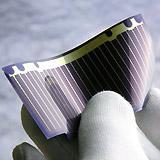
Even in conventional power plants (and especially nuclear ones) many effects reducing the lifetime of components and therefore the efficiency are not fully understood. Intense research is required in the development of devices for alternative energies like solar cells or fuel cells and in the exploration of energy storage and transport systems. Here materials allowing for high energy density combined with light weight are required. Neutrons and synchrotron radiation offers the opportunity to investigate material properties that are of importance within usage, supply, conversion and storage of energy.
The analytical techniques can be applied in research within environmental, energy, clean and green technologies. Neutrons and X-ray beams can be used in a broad range of measurements spanning from structural characterization of fibre materials under stress and strain in wind turbines to the monitoring of micro- and nanoscale structure of fuel cell components during their functioning.
Essentially, a study of structure and properties of a material or technology can lead to an optimization that may reduce emission of greenhouse gases and other pollutants, improve the efficiency in the use of resources and thereby also provide a potential reduction of financial costs.
Science Link offers your company the opportunity of accessing experimental facilities that may shed further light on a range of environmental and energy-related issues. To mention some:
- Functioning and stability of solar panels
- Low energy lightning, cooling and heating devices
- Structure of materials for thermal insulation
- Friction reduction and hardening of surfaces
- Light-weight construction materials
- Improved efficiency of propulsion techniques
- Study of catalysts in industrial processes
- Micro and nanoscale structure of biopolymers and composite materials
- Study of processes and materials for reduction and recycling of waste
The available experimental techniques include:
- Time resolved X-ray and neutron diffraction
- X-ray absorption spectroscopy
- X-ray fluorescence spectroscopy
- Small angle X-ray and neutron scattering
- High resolution and phase contrast enhanced X-ray and neutron imaging
- X-ray nanotomography
- X-ray and neutron reflectometry

